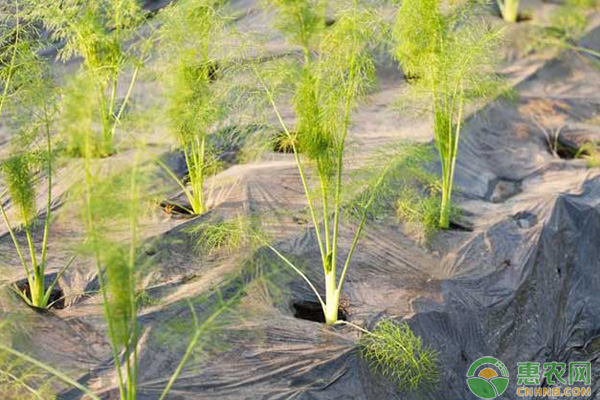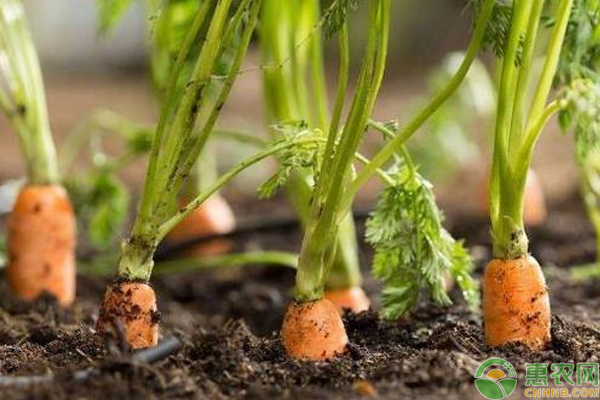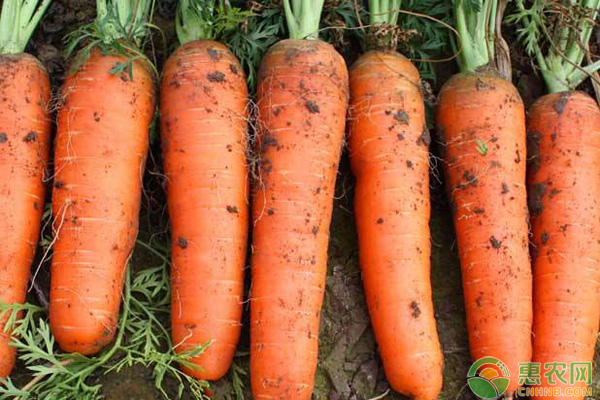Selenium-rich crops are now popular, and selenium is known as the "fire of life" and "king of cancer." Many human diseases are caused by pollution of the living environment, and selenium can effectively prevent the intrusion of harmful elements, and has the reputation of “natural antidoteâ€. It has now been proposed to increase the selenium content of carrots by selenium-enriched cultivation of carrots to meet the body's demand for selenium. Since 2014, the experiment on selenium-enriched cultivation in the main carrot growing area in Chengde has been carried out, and the high-yield cultivation techniques of selenium-enriched carrots have been summarized, aiming to provide technical support for the production of selenium-rich carrots in the northern Yanshan area. 1 Site selection Choose loam or sand with flat terrain, convenient drainage and irrigation, deep soil layer, loose texture, high organic matter content, no pollution, pH 6.0~8.0, selenium content not less than 0.125mg/kg, and no planting of Umbelliferae in the past 3 years. Plot of land. 2 Fertilization Autumn turns 25~30cm deep. Before planting, per mu (667 square meters/mu, the same below), 3,000-4000 kg of farmyard manure, 30 kg of nitrogen fertilizer, 15 kg of potassium fertilizer, 20 kg of phosphate fertilizer, 1 kg of zinc sulfate, 10 kg of ferrous sulfate, and 10~30 kg of selenium-enriched trace element. , phoxim granules 1.2~1.5kg, soil water retention agent 1.5~2kg, evenly mixed, spread on the ground, and then 1 shallow ploughing, deep 8~10cm, so that the base fertilizer is evenly applied to the topsoil below 8cm, fine Muping. 3 sowing 3.1 Variety selection Choose "Hongyu No.6", "Hongyu No.7" and "Hongying No.2" with strong adaptability, strong disease resistance, resistance to smoking, storage and transportation, (skin, meat, core) three red, good ending, and high commodity rate. "Azalea Red", "Xuguang Wu", "Black Field Five", "Improved New Black Field Five" "Red Show" "Red Ginseng King" "Red Jade" and other carrot varieties. 3.2 soaking seeds and germination Use new seeds, remove the bristles on the seeds, remove impurities, soak them in tap water for 3~4 hours, remove them into a wet cloth bag, cover the plastic film, and moisturize and germination at room temperature of 25 °C every 8~12 hours. Rinse the seeds once. When 10%~20% of the seeds are white, remove them and mix a small amount of dry fine soil to disperse the seeds for easy seeding. 3.3 Sowing period When 10cm of ground temperature is stable above 8 °C and the temperature is stable at 11~12 °C, it can be sown. Spring carrots are sown from early April to late April, and autumn carrots are sown from mid-July to early August. Early spring mulching or plastic small arch sheds are planted 15 to 20 days earlier than the open field. 3.4 Seeding method 3.4.1 Sowing in bare land Bare planting can be done by manual seeding or mechanical seeding. Artificial sowing is a semi-high sorghum or flat scorpion with a belt distance of 100cm and a height of 4~5cm. The width of the enamel is 70~75cm, and the spacing of the sputum is 25~30cm. Each row is sown 4 rows in a narrow width and narrow row, with a narrow row spacing of 15 cm and a wide row spacing of 25 cm. The manpower or animal force is trenched, and the groove depth is 10 to 12 cm. Plant spacing 10~12cm, spreading 2~3 seeds, covering 0.3~0.5cm thick fine tidal soil, slightly pressed. If mechanized sowing, ditching, fertilizing, and sowing are completed once, but the plant, row spacing and seeding amount should be adjusted before sowing. The narrow and narrow row spacing of each row is 15-25-15cm, and the plant (hole) is 10~12cm. Seed 2 to 3 seeds per plant. 3.4.2 Plastic film cultivation 3.4.2.1 Laying after first seeding The sowing method is the same as that of bare ground sowing, except that the artificial sowing is completed. 48% of Fluramine emulsifiable concentrate 150mL and 50~60kg of water are sprayed per acre of wow, and then covered with a 0.10mm thick, 95~100cm wide mulch, requiring the film to be tightened. Compaction, fixed once every 3~5m; if mechanized sowing, ditching, sowing, spraying, and laminating are completed once. 3.4.2.2 Seeding after mulching According to the above requirements, do a semi-high sorghum or flat sputum. After mulching, place 2~3 seeds on the water, cover 0.3~0.5cm thick tidal soil, and press slightly. 4 Field management 4.1 Release the seedlings After the emergence of mulching cultivation, when the temperature in the membrane reaches 27~28 °C, the seedlings are placed in time. When the seedlings are 2~3cm away from the membrane surface, the eyes should be ventilated in time, and 2~3 holes should be tied every 10m. After 1~2 days, the holes should be punctured, and the spacing between the holes is about 30cm. 2~3 leaf leaves, seedlings, 3~4 leaves, seedlings, seedlings, remove weak seedlings, seedlings, diseased seedlings, general plant spacing 10~12cm, single plant seedlings, film temperature is 10~25°C , no more than 30 ° C, to prevent hot seedlings, baking seedlings, flashing seedlings. In bare soil cultivation, only seedlings and seedlings are planted, and the method is cultivated with plastic film. 4.2 weeding soil In the bare ground cultivation field, the first cultivating and weeding in the 2~3 leaf stage combined with the seedlings, such as more monocotyledonous weeds, 10.8% of the grass can be sprayed with 20mL of water and 20kg of water per hectare, and the soil is planted in time. In the mulching field, weeds in the lateral membrane groove were removed by chemical spraying. After the seedlings are planted around the soil, the top of the fleshy roots is prevented from forming a green shoulder, which affects the quality of the carrot. 4.3 Fertilizer and water management 4.3.1 Bare field cultivation field The bare soil cultivation field keeps the soil moist before the emergence of the seedlings, and the soil after the seedlings is dry and wet. Spring sowing period to control watering, to avoid the ground temperature does not fall. In the 4 leaf stage, 10 kg of potassium sulfate compound fertilizer was applied per mu. After 20~30 days, when 7~8 leaves, 5kg of potassium sulfate is applied per acre combined with watering. When the growth of the leaves is strong, if the growth is too strong, the seedlings can be used for 10~15 days; the fleshy roots will keep the soil moist, ensure the water supply, water the right amount, and drain the water in time to eliminate the water in the field to prevent the roots and roots of the carrots. Stop watering 15 to 20 days before harvest. 4.3.2 Plastic film cultivation field In the mulching cultivation field, because the soil water retaining agent is applied in the soil, in the normal year of rainfall, there is no need to replenish water during the growing period, and it is necessary to drain the ditch in time in case of heavy rain. 4 leaves of foliar application 0.5kg 0.3% urea, 100mL hibiscus 300~400 times solution, 7~8 leaves, 2nd foliar spray 1kg 0.3% urea, 150mL hibiscus 200~300 times In the third stage of the succulent root expansion period, 0.4kg 0.2~0.3% potassium dihydrogen phosphate and 150mL hibiscus 200~300 times liquid were sprayed. The above is the cultivation technology points of selenium-enriched carrots. Welcome farmers who need to come to Huinong.com to learn from Huinong.com and other crop cultivation techniques can be used for reference! Functional oligosaccharides refer to oligosaccharides that are difficult or impossible to be digested and absorbed by the human body and have special physiological effects on the human body. Its sweetness is generally only 30-50% of that of sucrose, and it has physiological functions such as low-calorie, anti-caries, prevention and treatment of diabetes, and improvement of intestinal colony structure. Due to the special physiological functions of functional oligosaccharides, it becomes a nutrient and health care product. A new generation of food-effect raw materials that integrate diet and therapy. It is a new functional sugar source that replaces sucrose and has a wide range of uses and application prospects. Common functional oligosaccharides include: xylo-oligosaccharides, fructooligosaccharides, galacto-oligosaccharides, isomaltose, raffinose and so on. XOS, GOS, FOS, IMO, Raffinose, oligosaccharide Xi'an Gawen Biotechnology Co., Ltd , https://www.ahualyn-bio.com

